Golosaria is a "culture and taste" exhibition. A unique event that brings to the fore the very best italian artisans. Every autumn they meet in Milano and Torino, and in spring in Monferrato to show you the most wonderful italian foods. Pasta, sauce, cheese, pastry, beer, chocolate, wine ...

I missed the date in Milano, so I went to Torino the following week (November 15, 2009)... and I went there as "breadaholic" to meet a master baker (Gianfranco Fagnola) and learn more about a famous miller (Molino Quaglia) and his top flour (Petra).
08:00 in the morning, get on the train to Torino (01:40 from Milano). Go straight to P.zza Mestieri Association Palace in "J. Durandi street, 13). Take a look around and stop at Molino Quaglia stand.

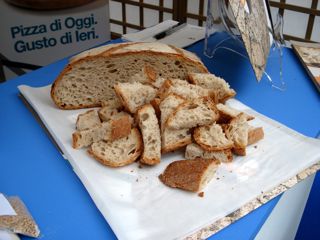

Here I spoke with the technical guy of Molino Quaglia: Giuseppe Vignato. He was really kind and he gave me a lot of information. Molino Quaglia is a big professional Italian miller located in Vighizzolo D'Esta (Padova). They build a "new concept flour": Farina Petra. In the above shots you can see Petra brochures and a loaf of Bread (Pane Bra a naturally leavened bread made with Petra by Gianfranco).
Petra is a stone milled in pureness flour made with the aid of modern technology, exalting the taste of wheat. Petra is made up of blends of selected wheat (most of them are not Italian) in order to give the taste of wheat, the protagonist, to bread, pizza and cakes. Here a few details: classified as Tipo 1 (extraction rate 80%), contains a lot of soluble fiber and the wheat germ, not malted (but checked in enzymatic activity, ie falling number), we do not have alveograph info but maybe >W300, proteins 14%, absorption 70%, milled with special stones controlled with laser technology.
They have Petra1 for bread, Petra3 for pizza, Petra5 for pastry and conTuttoIlGrano; my focus was on 1+3+conTuttoIlGrano. The last one is a whole version of Petra1 with added toasted bran (that's interesting!). Petra is perfect to be used with sourdough and indirect method (poolish and biga).
After the interview I asked Giuseppe to speak with Gianfranco, the baker. He was in the lab preparing all we would need for the afternoon (15:30) public session. So I met Giuseppe, a master and a gentleman! It was a cool experience as there were only three of us in the lab: me, Gianfranco and two baking teachers (the lab is located in the culinary school - Scuola Immaginazione e Lavoro). A lot of Q&A and hand-on tests!
Before lunch we mixed the dough for Pane Petra. (Shots: liquid levain, spiral mixer, mixed dough, Gianfranco put out the dough, Gaetano put the dough in the fermentation cell).
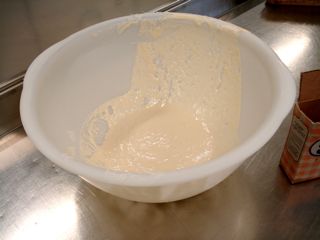



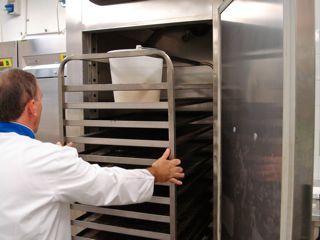
(12:30) Then we had a lunch break. I ordered my hand notes and ate my (Pane Fermento) sandwich with a good red handmade craft beer from the microbrewery. 13:30 back to the lab!
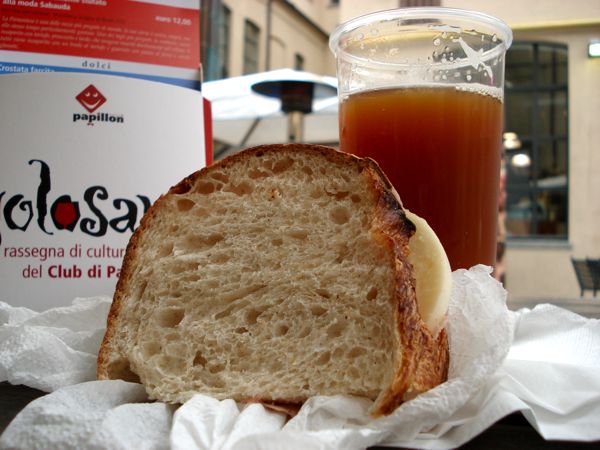
We pre-shaped the loaves, bench rest and final shaping. Back to the fermentation cell. (Shots: dough after bulk fermentation, pre-shaped loaves, Gianfranco shaping, fermentation cell)
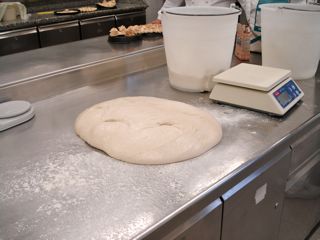
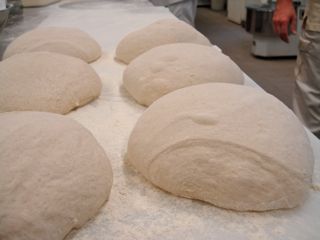


In the afternoon the lab opens the doors (there were about 80 persons). Three sessions: bread, pastry and pizza.
Here some photos of the lab (small fork mixer, small spiral mixer, sourdough temperature controlled machine, pastry ingredients, Petra ciabatta poster, the lab, tools):
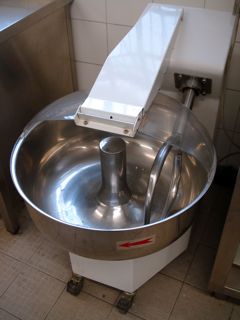
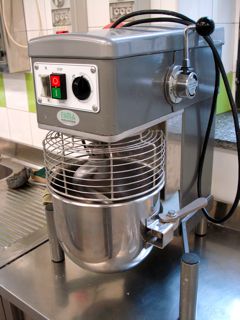

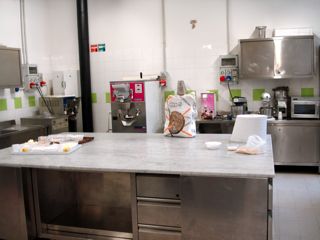
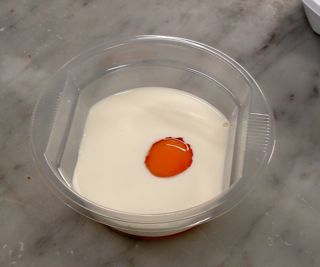
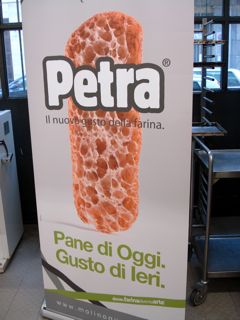
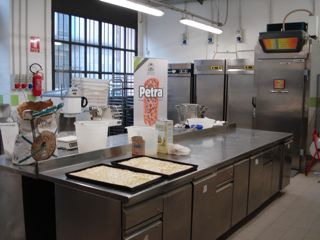

This was the bread session: Gianfranco showed two preferments, we tasted a biga and stiff sourdough, he showed sourdough refreshment and then scoring and baking. He answered to a question about starter activation, but I did not agree at all with him. (Shots: Gianfranco and Gaetano, the stiff mother dough, the refreshed stiff mother dough, scoring the dough, baking).
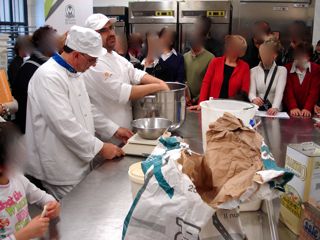
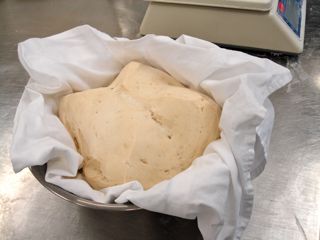
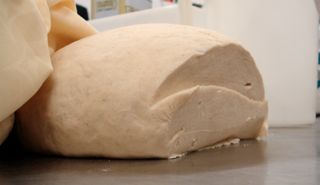
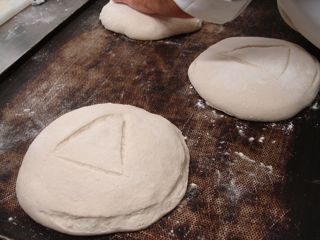
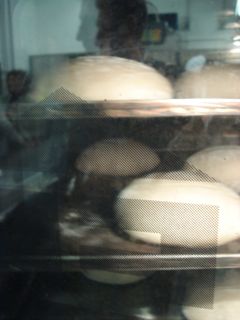

And now the information you are waiting for.
I think his "school" is the P.Giorilli's one. Gianfranco uses both stiff and liquid levain (the chef), his culture is refreshed 1:1:2 (stiff) and 1:2:2 (liquid) fermented about 04:00 at 28°C then kept stable at 12°C and used within 12:00, he feeds the culture with only white wheat strong flour (the same strong and balanced flour used for Panettone). He doesn't use (and I think he doesn't like) dough cold retardation. He says that he likes mild sourness and I don't agree with him, but after further information on the flavor I like (the French sourdough, Poilane style) he said my taste is elevated and most people in Italy do not accept this kind of flavor.
And now Pane Petra. Do not expect something unconventional, it's aligned with our processes.
Overall Formula
| Petra1 |
100% |
| Diastatic Malt* |
0.5% |
| Water |
70-75% |
| Salt |
1.8% |
* this is the % for liquid malt.
Preferment
15% of the total flour is prefermented at 100% hydration (1:1:2).
Dough consistency
Soft.
Desired dough temperature
28°C.
Process
- Mix all ingredients except salt and malt, hold back 10% water.
- Autolyse 00:20, then add salt and malt on top.
- Mix on 2^ speed for about 00:15 and add slowly the remaining water to adjust the dough consistency.
- Bulk fermentation 01:00 at 28°C 75% humidity.
- Divide (800g) pre-shape and shape
- Proof 03:00 at 28°C
- Bake on stone at 240°C->220°C for 00:50 / 01:00.
We did not have a good steamed deck oven, so Gaetano advise the use of a big rack oven. The result was good but the absence of the stone and hot deck produced a "small defect" in one loaf, we had a "tunnel"! No one is perfect!
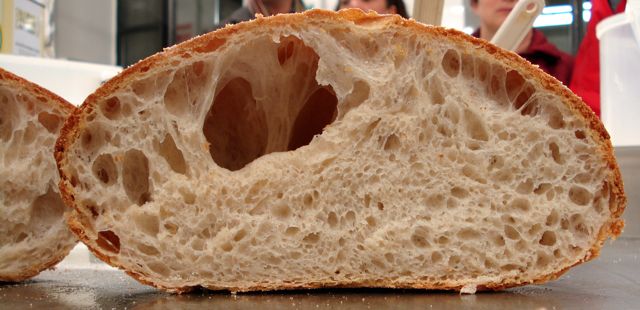
18:00 it's time to go home. And I bring with me a little piece of Gianfranco culture and 620g of Petra1 (this will be used for my "Petra test").
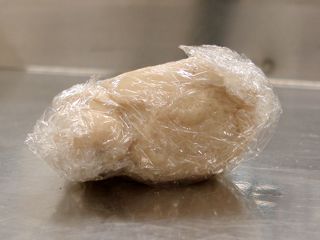
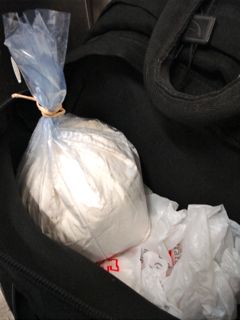
 Gianfranco Bagnola bakery is located in Viale Madonna dei Fiori, Bra (Cuneo).
Gianfranco Bagnola bakery is located in Viale Madonna dei Fiori, Bra (Cuneo).
Giovanni